Are you new to milling your own flour and find it confusing to know what type of wheat berries are best? Learn the differences between the each variety and how to choose wheat berries for your specific baking needs.
This post contains affiliate links, which means I make a small commission at no extra cost to you. In any case, I only link to products we actually use on our homestead and that I believe can truly benefit to you. See my full disclosure here.
Milling flour at home is simple and incredibly nutritious but knowing how to choose wheat berries and what is the best way to use them can be a bit overwhelming at first.
When my family and I first began milling our own flour, we weren’t sure where to start. We read a few books, watched several YouTube videos and dove heavily into articles about grinding grains.
After thorough research, we purchased a stone grain mill and a small amount of wheat berries from an online supplier. As we began experimenting, we learned what types of wheat berries were best for certain recipes and what didn’t work as expected.
Looking back, I laugh at some of the loaves of bread I made with fresh milled flour that may have been edible but were certainly not magazine worthy.
Today, I’d like to share with you a grain purchasing guide, containing our knowledge and years of experience on wheat berries. May this list of different wheat varieties help you decipher the ins and outs of turning wheat berries into flour.
What are Wheat Berries?
A wheat berry is an edible kernel that comes from the head of a wheat plant. The hull is removed, leaving the whole grain in tact with the germ, bran and endosperm. Before processing, the wheat berry contains many nutritious vitamins, minerals and other nutrients. Wheat berries have a similar look to brown rice and can be used for cooking and sprouting. When ground in a grain mill, the wheat berries turn into flour and are used to make everything from breads and cookies to tortillas and muffins.
Types of Wheat Berries and Their Uses
Today there are six primary wheat classifications, each variety being based on its protein quantity, color and what time of year it is grown — that being in the spring or winter months. Of those 6 types, there are nearly 30,000 varieties of wheat, which of only a small handful are sold to the public. Below you will find detailed information on each type of wheat and how to choose wheat berries for your baking needs.
First let’s start off by answering a few common questions about the classes of wheat.
What is the Difference Between Soft and Hard Wheat Berries?
The major difference between hard and soft wheat is the hardness of the wheat kernel. Hard wheat has a high amount of protein and gluten potential which makes it an excellent choice for making yeast breads. In fact, hard wheat is really the only type of wheat berry that creates enough gluten to make a successful loaf of bread.
Soft wheat is just the opposite. With low gluten formation and a smaller amount of protein, this wheat variety is best used for pastries and baked goods such as cakes, quick breads, cookies and brownies.
Wheat Berries Red vs White
Red and white are just words to describe the color of the wheat kernel. Each type of wheat has a different color of bran. For instance, hard red wheat has a reddish coloring compared to hard white wheat.
There is a slight difference in flavor when it comes to red versus white wheat. Red has a nuttier flavor while white is more plain. I use both types of wheat berries interchangeably and honestly cannot tell much of a contrast between the two.
What is the Difference Between Winter and Spring Wheat Berries?
The main distinction between winter and spring wheat is the time of year that it is grown. Winter wheat is planted in the fall, grows a little over the winter, becomes active in the spring and is harvested during early summer.
Spring wheat is a faster growing crop. It is sown in the spring when the ground has thawed and is harvested late summer.
Hard Wheat Berries
Let’s begin with hard wheat. Hard wheat, that being red or white is a low-moisture kernel that contains 10% to 14% protein. Due to the high amount of protein, it is an ideal grain to use in yeasted baking recipes such as bread made with fresh milled flour.
Hard White Wheat
Light in color and mild in taste, hard white wheat has a great amount of protein, making it perfect for baking, especially when making a loaf of bread. It is one of the most common wheat varieties grown and sold today. If you are just starting to bake with fresh milled flour, I’d recommend hard white wheat. It is very beginner-friendly.
You can use hard white wheat to make cranberry orange cinnamon bread, pita chips, homemade pasta or cinnamon rolls.
Hard Red Wheat
Hard red wheat has a richer, sweeter, more “wheaty” taste. The red coloring gives baked goods a darker coloring and a more earthy appearance. Many times when you purchase this type of wheat, it is simply called hard red wheat but there are many unique or heirloom varieties available. Some such types include turkey red, red fife (named after the Canadian farmer, Dave Fife), Kansas turkey and redeemer wheat.
I like to use this grain when making pretzels, pizza dough, fettuccine or onion herb artisan bread.
Soft Wheat Berries
Known for its mild flavor and ability to make soft, light baked goods, soft wheat is the grain of choice when the recipe doesn’t require much gluten. Soft wheat is intended for pastry making such as cakes and cookies. About 2/3 cup of soft wheat berries makes 1 cup of flour.
Soft White Wheat
Soft wheat has a lower protein count and a higher moisture content making the wheat berry soft in hardness with minimal gluten potential. Due to its lack in gluten formation, this type of grain is great for sweet baking recipes such as banana bread, biscuits, pie crusts, cranberry oatmeal cookies and peach spice muffins.
This grain is naturally light cream in color and tends to be relatively inexpensive to purchase. If you are new to milling flour or you have minimal storage room, I would suggest buying two types of grains – hard white wheat and soft white wheat. Both are very versatile in the types of recipes you can use them in.
Ancient Grains
In recent years ancient grains have regained popularity. These old grains are considered to be ancient because they have changed very little over thousands of years. Many are thought to be more nutritious and easier to digest. Much of these ancient wheat varieties have a low-yield, are more difficult to produce and has a small demand, making them expensive to purchase. You will find each of these species are packed full of flavor and a hearty taste.
Spelt
One of my favorite ancient grains to use is spelt. It is soft in texture, nutty in flavor and works wonderfully in both breads and pancakes. If using spelt to make a yeast bread recipe, you’ll need to add about 25% more flour. This is due to it being lower in gluten, even though it does contain a high amount of protein.
Kamut
Kamut, also known as khorasan is a golden colored grain that produces beautiful flour for homemade pasta. It gives tortillas, pasta and even bread recipes a rich and buttery flavor. The weak gluten structure makes for a dense loaf of bread so it is best to mix it with some modern day wheat in order to create a big, soft loaf of bread. Since kamut is an ancient grain, it can be a bit costly. Durum wheat is a great modern substitute when making pasta with fresh milled flour.
Rye
Rye flour has a very unique flavor that I find is almost hard to describe. It is rich in fiber, a great source of magnesium and an easy grain to mill. Many times rye is fermented to make a loaf of sourdough bread. But it can be used for muffins and brownies as well. If you don’t want to make a loaf of 100% rye bread, simply mix a cup or two of rye flour into your favorite bread recipe. It’ll add a nice tangy flavor.
Emmer
A descendant of einkorn, emmer has a much lower gluten capability than modern wheat. For this reason it can take a bit of time to learn how to use it to make bread. Emmer, like einkorn is a rare type of wheat to source. If you find it at a decent price, be sure to grab some. It is tasty and full of minerals, fiber and other essential nutrients.
Einkorn
Einkorn is the only wheat variety that has yet to be hybridized. Many people with a gluten sensitivity have found that they can consume einkorn without any adverse affects. Due to its unusual protein structure and low potential to create gluten it can be tricky to work with when making breads and other baking recipes. Because there are so few einkorn producers, the cost of einkorn, in the form of ground flour or wheat berries is very expensive.
I personally have had little experience with einkorn. If you’re looking for tips for baking with einkorn flour or some tried and true einkorn recipes, I would highly recommend Carla Bartolucci’s cookbook or Lisa from the Farmhouse on Boone.
Other Types of Grains
- Amaranth – A super-grain that makes a great breakfast porridge.
- Buckwheat – a gluten-free grain containing vital amino acids.
- Corn – perfect for making homemade cornbread.
- Durum wheat – a modern wheat that is used to make many types of pasta.
- Oats – very nutritious, is a great choice to improve gut health and makes a wonderful addition to homemade meatballs and cereals.
Frequently Asked Questions
What are the Best Wheat Berries for Making Bread?
Hard wheat berries, red or white are best for making a light, fluffy loaf of bread. The high amount of protein in this type of wheat ensures there is enough gluten to help properly rise yeast bread.
What are the Most Nutritious Wheat Berries?
Many people would argue that ancient grains or heirloom varieties are the most nutritious form of wheat. Personally, I find that regardless of the variety, when you grind your own flour at home, you receive all of the nutrients from the whole grain kernel — vitamins, minerals and oils. This in comparison to commercially produced white flour is not only much more healthy but also more flavorful.
What is the Old Type of Wheat?
Einkorn is the oldest form of wheat. From there comes emmer, kamut and spelt, the grain that hasn’t been altered much since the days of the Bible.
Is Wheat Genetically Modified?
No, even though wheat has been altered through crossbreeding to create a crop that produces higher yields, wheat has not had its genes combined with other species to make a genetically engineered grain.
Can Wheat Berries Be Frozen?
Yes! Wheat berries can be frozen. A couple of years ago when I found bugs in our newly purchased bag of wheat berries, I frozen the grain in individual bags to kill the critters. It worked out well! I simply pulled the bags out of the freezer when I need them, let them come to room temperature and ground the berries in my mill as I normally would.
Wheat Basics
Are you ready to start milling flour at home? Check out this post to learn what is the best small flour mill for home use, how to store wheat berries and where to buy wheat berries.

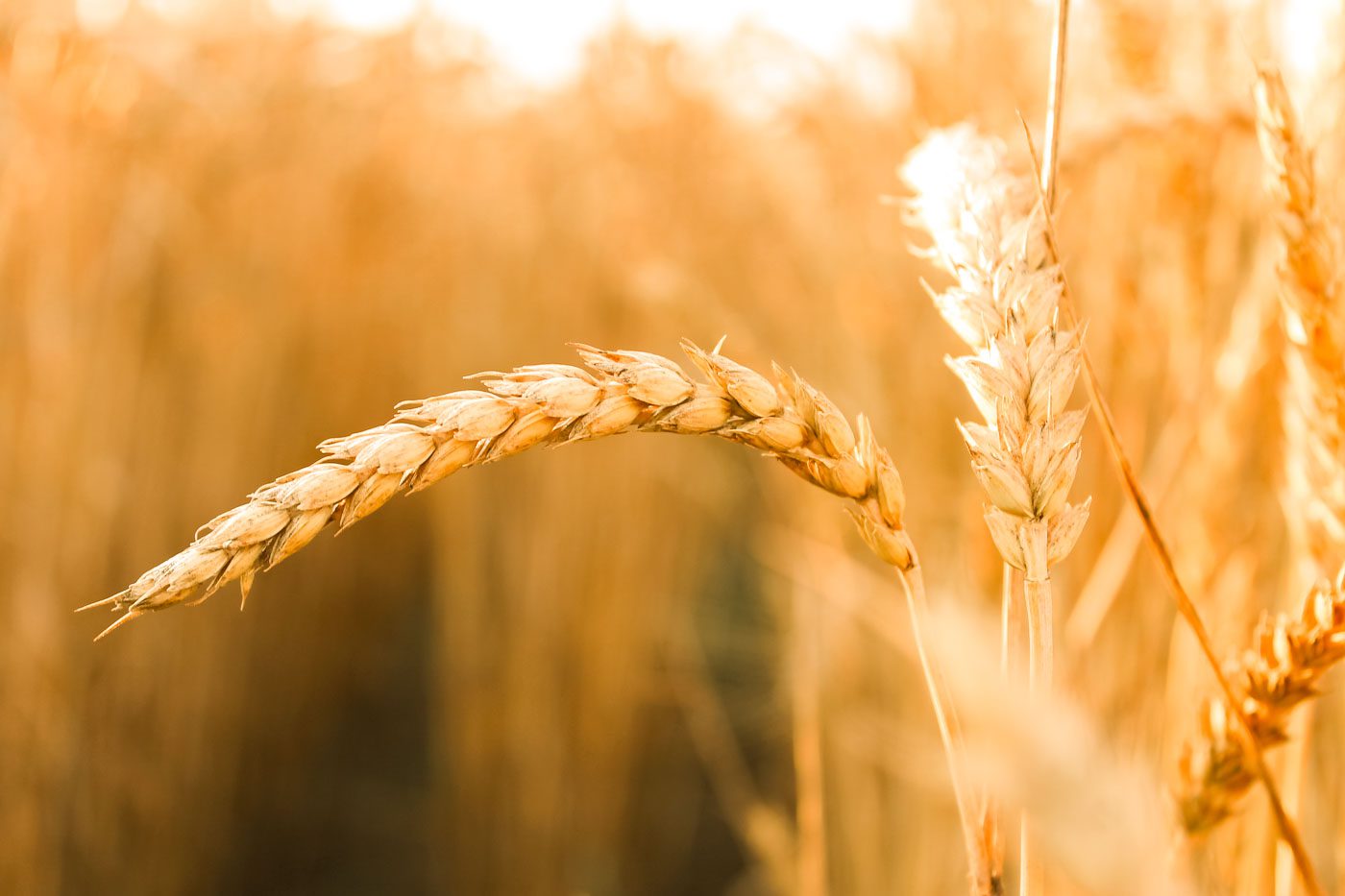
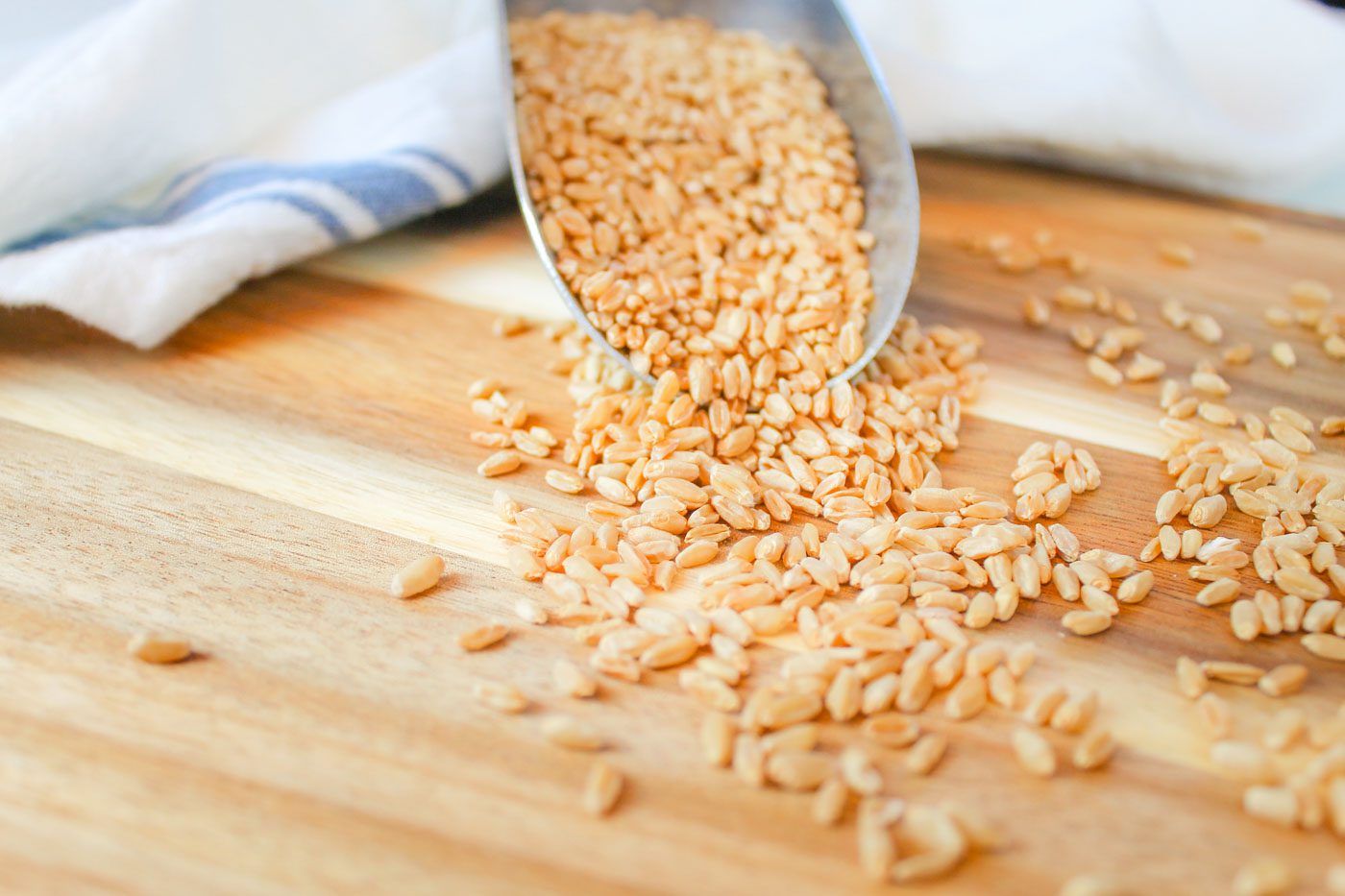
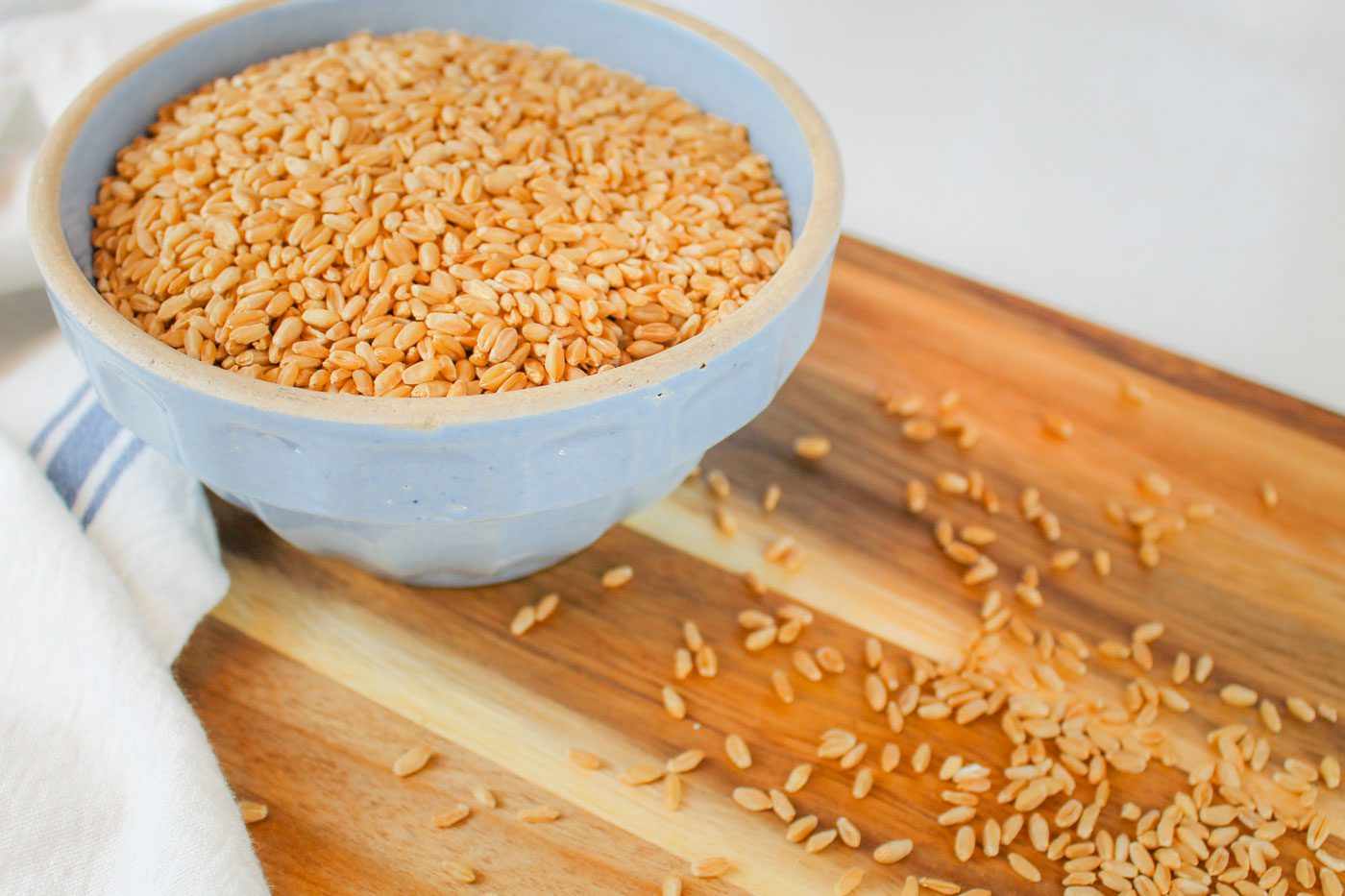
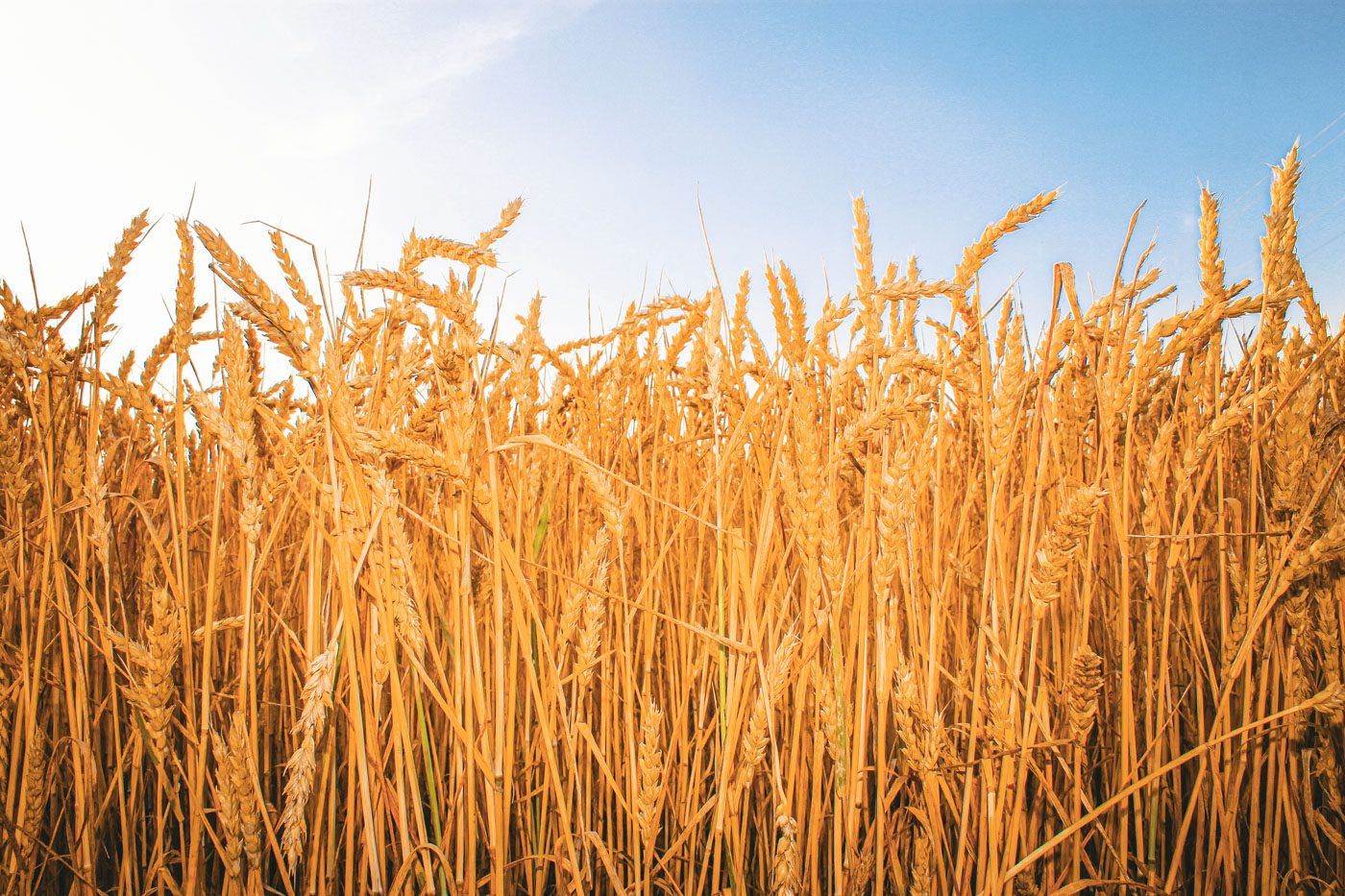
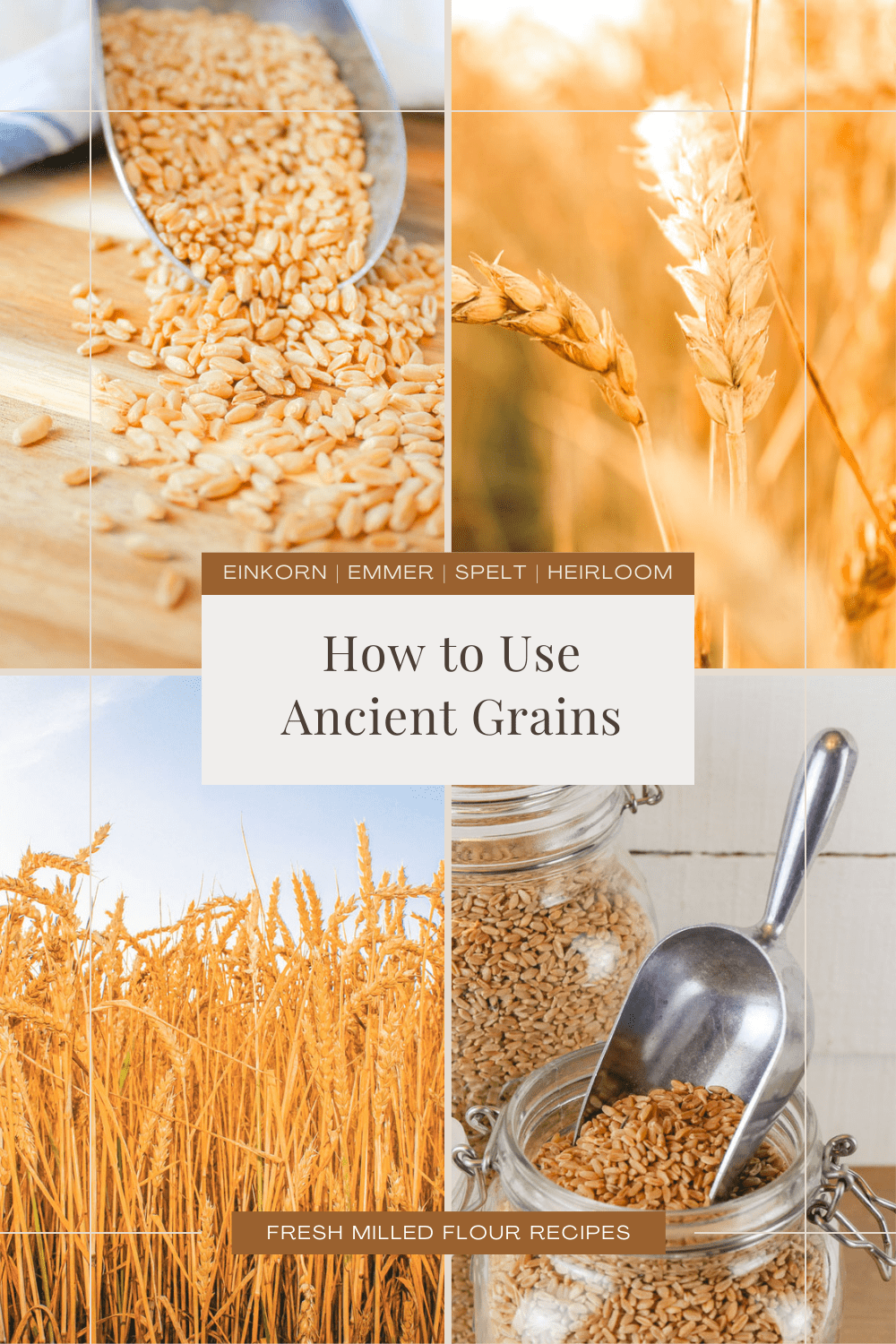
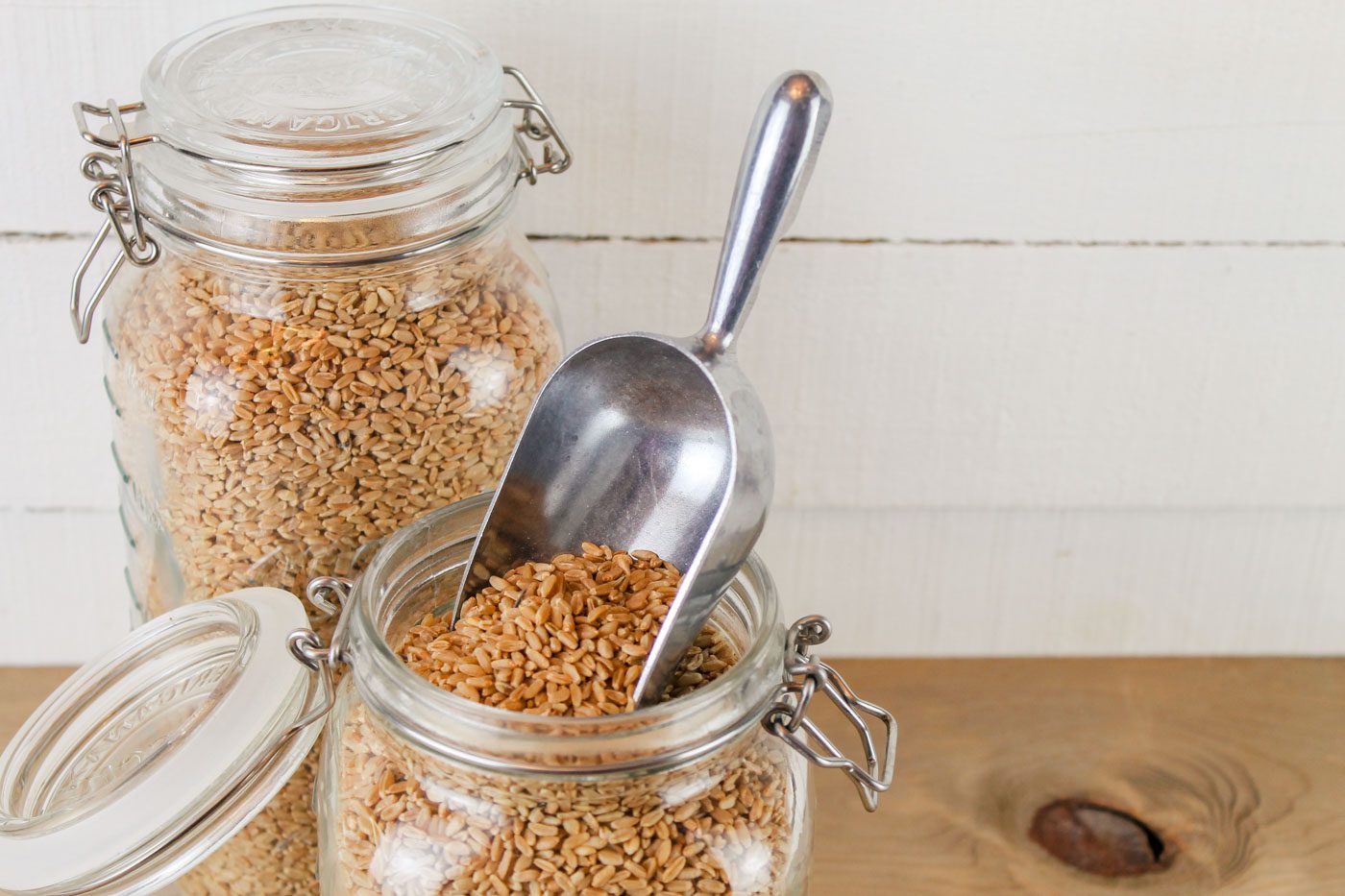
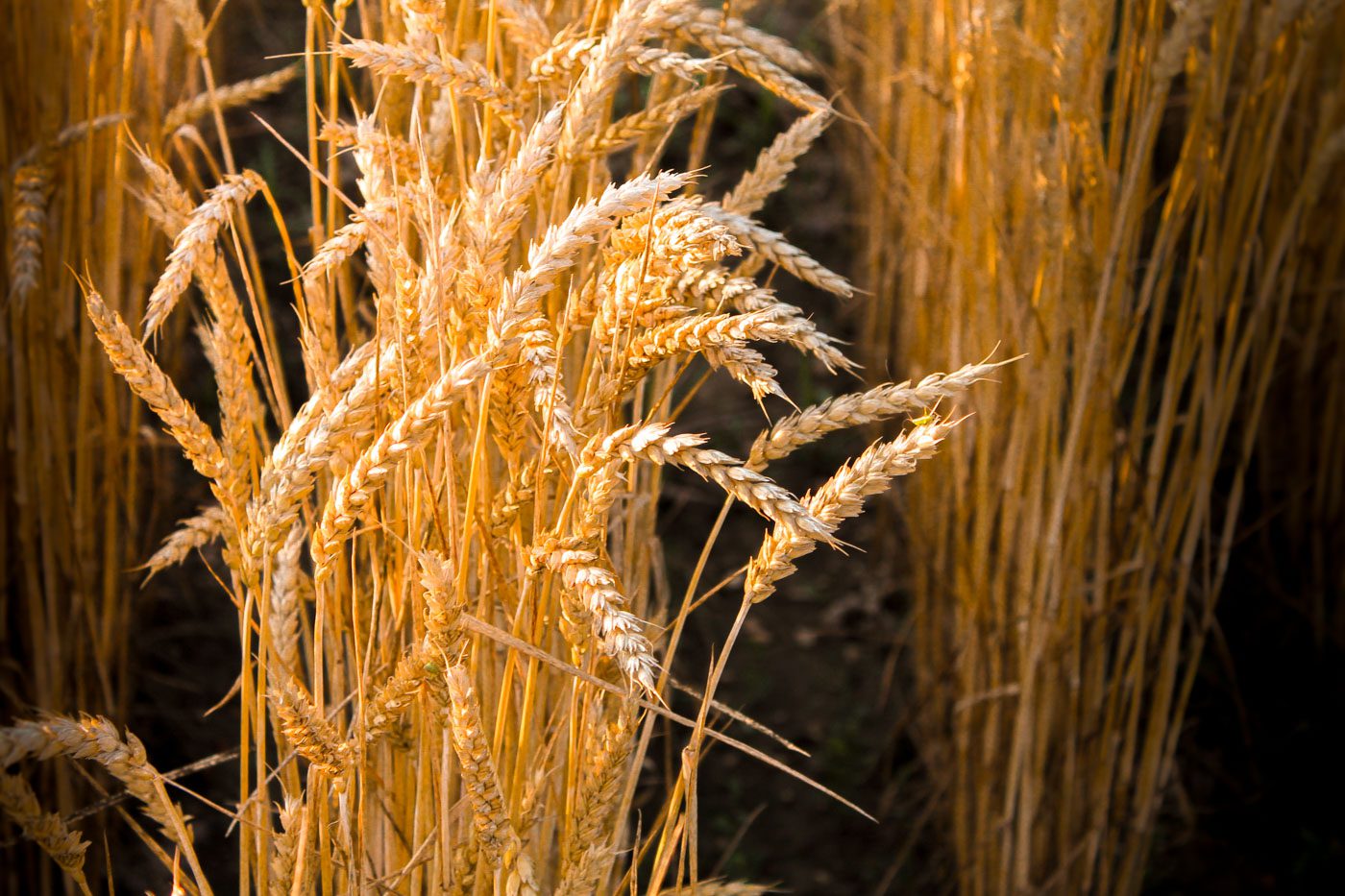
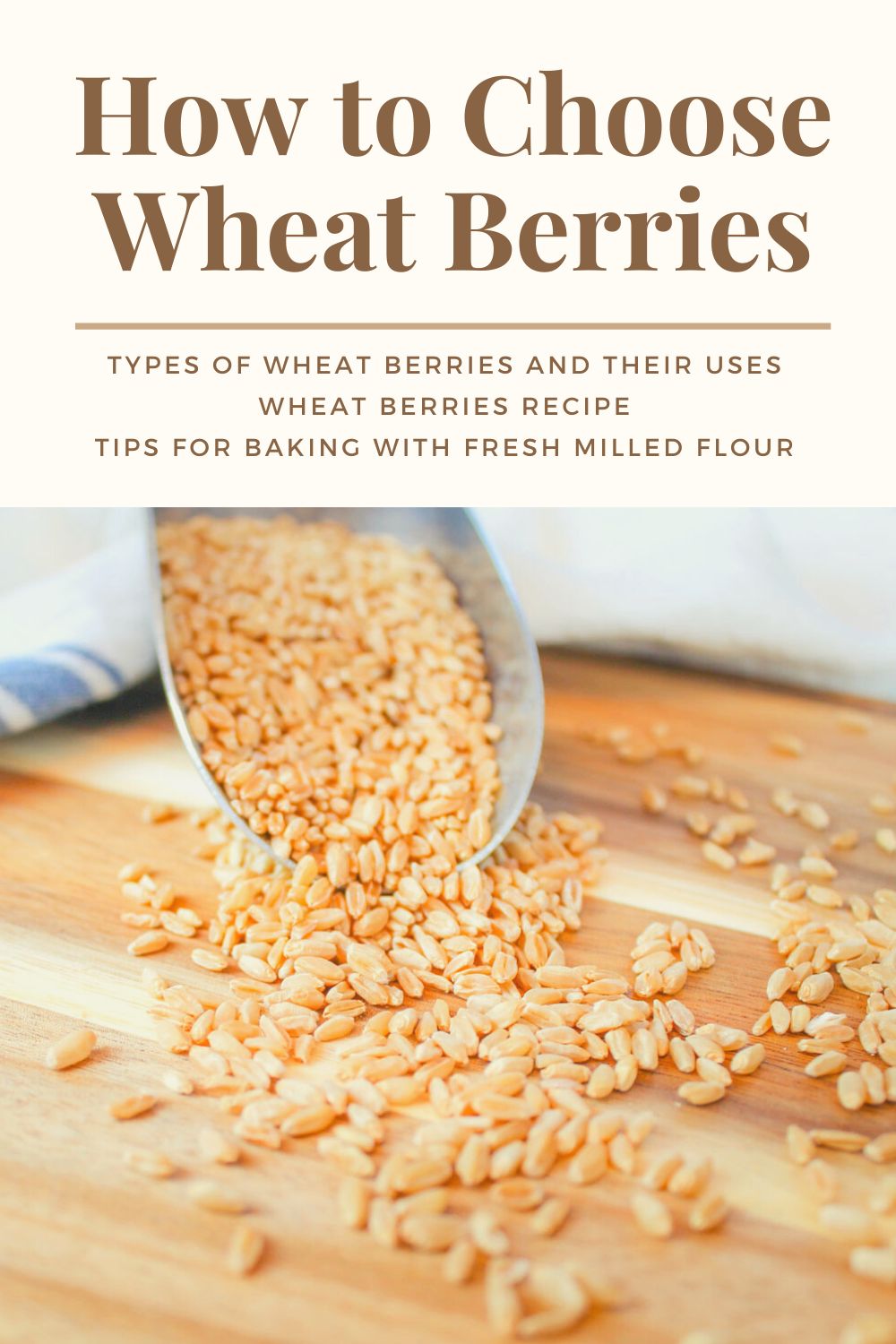





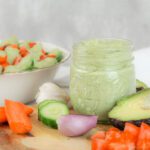
How are sprouted wheat berries vs. non sprouted berries used differently? are they both options for long storage and then use in baked goods?
There is really no big difference between wheat berries and sprouted wheat berries except that the sprouted wheat is packed full of even more nutrients and vitamins. You can sprout your grains, make them into fresh milled flour and use them in baking recipes just as you would normal wheat berries. Wheat berries can be stored for many years, if not a few decades, however sprouted wheat berries need to be thoroughly dried before storing them to prevent for rotting or molding. They should be stored in a sealed, airtight container. I personally have never kept sprouted wheat berries for an extended amount of time so I cannot give you a correct answer on how long they may last.
This is SO helpful! A friend gifted me a Nutrimill grinder and I’m digging in trying to learn. Any recommendations for where to buy organic berries? I am already baking sourdough and am trying to figure out if I can use fresh ground flour for sourdough too.
I’m so glad to hear that! What a wonderful gift. I love to purchase organic berries from Azure Standard. They sell all sorts of modern and ancient wheat varieties that are organic. I haven’t delved too deeply into sourdough made with fresh ground flour but the times I have tried using sourdough discard with the fresh milled flour has worked out successfully. I’ve also seen a few YouTubers work with it to make sourdough and they have had good results. Three Rivers Homestead and the Farmhouse on Boone are two accounts you might want to check out. 🙂
I Would Like To Use Koliva Prepared Wheat Berries
As A Substitute For Both Bread & Spaghetti.
?? Which Type of Wheat Berries Is Best ??
I’m not sure what koliva prepared wheat berries are. I like to use hard white or red wheat berries when making bread. For pasta, I would suggest durum wheat. If you’re into ancient varieties, I’d suggest kamut. If you have neither of those on hand, hard red wheat berries makes a delicious pasta.